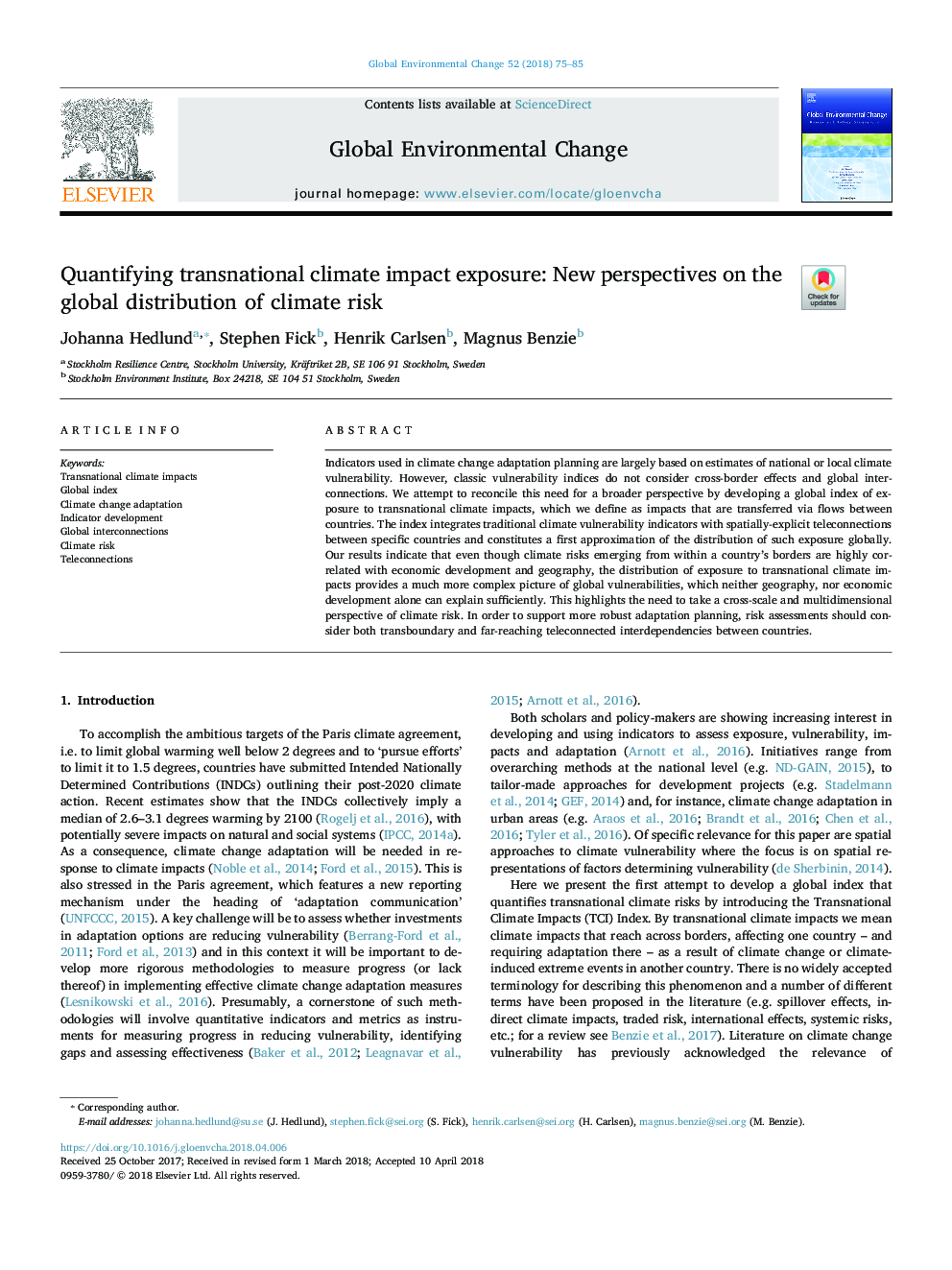| Article ID | Journal | Published Year | Pages | File Type |
|---|---|---|---|---|
| 7468673 | Global Environmental Change | 2018 | 11 Pages |
Abstract
Indicators used in climate change adaptation planning are largely based on estimates of national or local climate vulnerability. However, classic vulnerability indices do not consider cross-border effects and global interconnections. We attempt to reconcile this need for a broader perspective by developing a global index of exposure to transnational climate impacts, which we define as impacts that are transferred via flows between countries. The index integrates traditional climate vulnerability indicators with spatially-explicit teleconnections between specific countries and constitutes a first approximation of the distribution of such exposure globally. Our results indicate that even though climate risks emerging from within a country's borders are highly correlated with economic development and geography, the distribution of exposure to transnational climate impacts provides a much more complex picture of global vulnerabilities, which neither geography, nor economic development alone can explain sufficiently. This highlights the need to take a cross-scale and multidimensional perspective of climate risk. In order to support more robust adaptation planning, risk assessments should consider both transboundary and far-reaching teleconnected interdependencies between countries.
Related Topics
Life Sciences
Environmental Science
Environmental Science (General)
Authors
Johanna Hedlund, Stephen Fick, Henrik Carlsen, Magnus Benzie,
